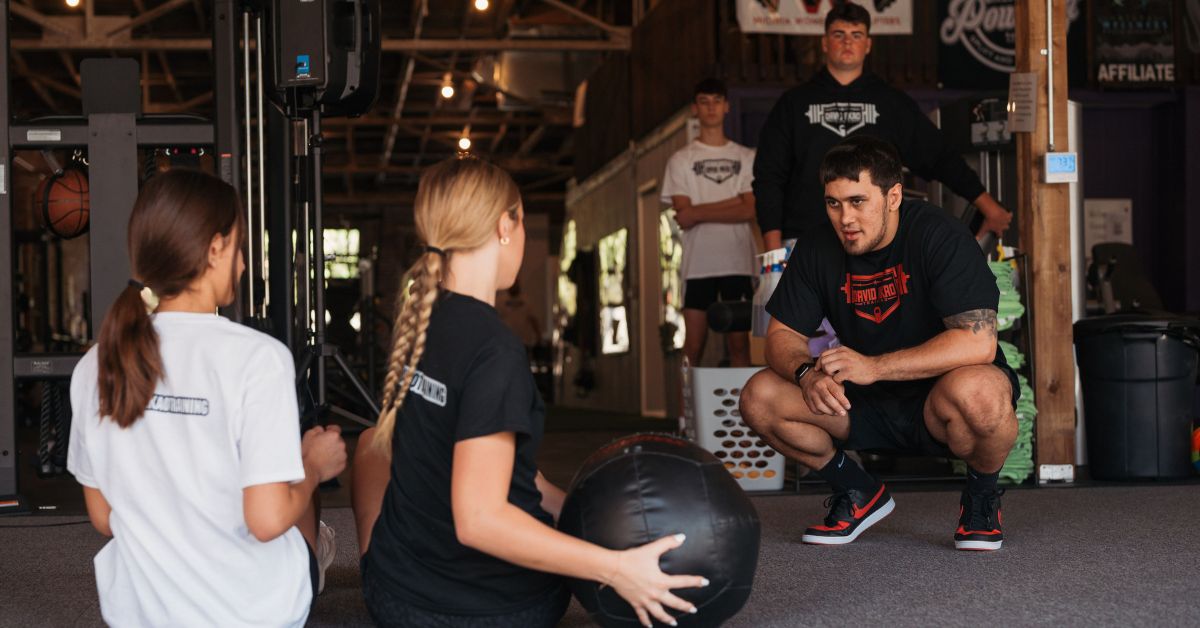Talk of a career as a trainer often paints a picture of glamour, but the reality is that it is a challenging journey that demands more than just a love for workouts or a background as an athlete. As someone living their dream daily, I work with incredible clients and athletes, but I also think it’s essential to shed light on the less-recognized aspects of this profession.
Whether you’re a highly experienced professional or someone on the verge of entering the sports performance field, understanding the following points is crucial for navigating the demanding landscape of the fitness industry.
1. High Turnover Rate
The fitness industry witnesses an alarming 80% annual turnover rate, and an overwhelming number of trainers don’t make it past two years. This career demands a unique resilience and determination to overcome the odds. Personally, I’ve seen colleagues exit the field almost immediately, highlighting the need for a different mindset to thrive.
Embracing change, staying updated on industry trends, and honing diverse skills not only helped me navigate the challenges of the fitness profession but also positioned me as valuable and versatile. Share on XIn the face of the daunting turnover rate, I found that cultivating adaptability and continuously seeking professional development was crucial. Embracing change, staying updated on industry trends, and honing diverse skills not only helped me navigate the challenges but also positioned me as a valuable and versatile fitness professional.
2. Low Pay
Shifting your focus from monetary gains to serving more people is a mantra that resonates in this industry. While the potential for significant income exists, the reality is that it takes time to build a substantial clientele.
To weather the financial uncertainties during the initial phase, I struck a pragmatic balance by taking on a part-time gig driving for DoorDash. This allowed me to sustain my passion for fitness while mitigating the early career instability and building my client base.
3. Clients as Bosses
Working as a trainer means having multiple “bosses”—your clients. Their preferences determine your income, and accommodating their needs, even if it means unconventional session times, becomes a part of the job. The constant risk of losing all clients overnight is a stark reality every trainer faces.
To hedge against the risk of relying too heavily on a specific client demographic, I strategically diversified my clientele. I created a more resilient client portfolio by working with individuals from various sports backgrounds, age groups, and fitness levels. This approach not only provides a safety net in the event of sudden shifts in one segment but also allows for a dynamic and enriching professional experience as I cater to a diverse range of fitness goals and preferences.
4. Weird Hours
Irregular working hours are inherent in this profession. I’ve found myself catering to business owners in the morning, college students in the afternoon, and athletes in the evening, resulting in 12-hour days. Last-minute cancellations contribute to unpredictable schedules, and, as they say, “Show me a successful personal trainer, and I’ll show you someone who abuses caffeine.”
5. Take What You Can Get at First
Early in my career, I aspired to work exclusively with athletes. However, my initial two years were spent primarily training the general population at a big box gym.
Surprisingly, this turned out to be more valuable than I realized, helping me hone fundamental skills in strength and conditioning and gain coaching experience and confidence.
6. Say ‘Yes’ to as Many Opportunities as Possible When Starting Out
Saying “yes” to various opportunities, even when unpaid, sets the foundation for success. Shadowing sessions and training diverse clients—including an 80-year-old woman—became stepping stones that paved the way for a more established career.
7. Be Prepared to Deal with Conflict
Conflict resolution skills are vital, from negotiating prices to managing unexpected changes. As trainers, we must strike a balance between standing our ground and maintaining positive client relationships.
Clear and transparent communication, coupled with a proactive establishment of expectations, allows me to set boundaries effectively and stand my ground when necessary, says @trayner_dave. Share on XIn my approach to conflict resolution, I’ve found that clear and transparent communication, coupled with a proactive establishment of expectations, allows me to set boundaries effectively and stand my ground when necessary—all while fostering a collaborative and respectful atmosphere that encourages clients to stay committed to their fitness journey.
8. You Will Be Judged Based on Your Image
The unfortunate reality is that potential clients often judge a trainer’s knowledge based on their physical appearance. Finding a balance between personal fitness goals and professional commitments remains a constant challenge.
Recognizing the importance of my own well-being as both a personal priority and a strategic business tool, I carve out dedicated time for my training, often scheduling it during less hectic periods or incorporating short, high-intensity sessions to ensure consistent self-care amid busy days in the dynamic fitness industry.
9. A Certification Doesn’t Mean Everything
While certifications are vital, soft skills, marketing, and salesmanship play an equally crucial role. Building relationships and effectively selling oneself are paramount, as witnessed by the success of trainers who may not have extensive training knowledge but excel in people skills.
10. Do No Harm
Prioritizing client safety in exercise programming is non-negotiable. Think like a lawyer when designing workouts to ensure the well-being of clients and yourself, avoiding potential setbacks that could hinder your ability to serve effectively.
11. Limited Benefits
Gyms often do not provide benefits like salary, 401k, paid time off (PTO), and health insurance. Financial planning and flexibility are necessary to navigate the unpredictable income flow in this field.
12. No One Is Going to Hold Your Hand
While mentors and guidance along the way are invaluable, success ultimately hinges on personal determination, grit, and proactive efforts. If the challenges seem insurmountable, alternative corporate desk jobs are always available.
The Unyielding Passion: Thriving Amid the Realities
In the face of the formidable challenges outlined in this article, the heart of a trainer’s journey lies in their unwavering passion for transformation and impact. The joy of witnessing clients conquer their goals, the fulfillment found in continuous self-improvement, and the privilege of being a guiding force in someone’s fitness journey transcend the harsh realities of the job.
It’s the resilience forged through overcoming obstacles, the diverse connections formed with clients, and the personal satisfaction derived from facilitating positive change that keep trainers not just surviving but thriving in this dynamic profession. The rewards of helping others achieve their best selves serve as a powerful source of motivation, eclipsing the trials and tribulations inherent in the fitness industry.






